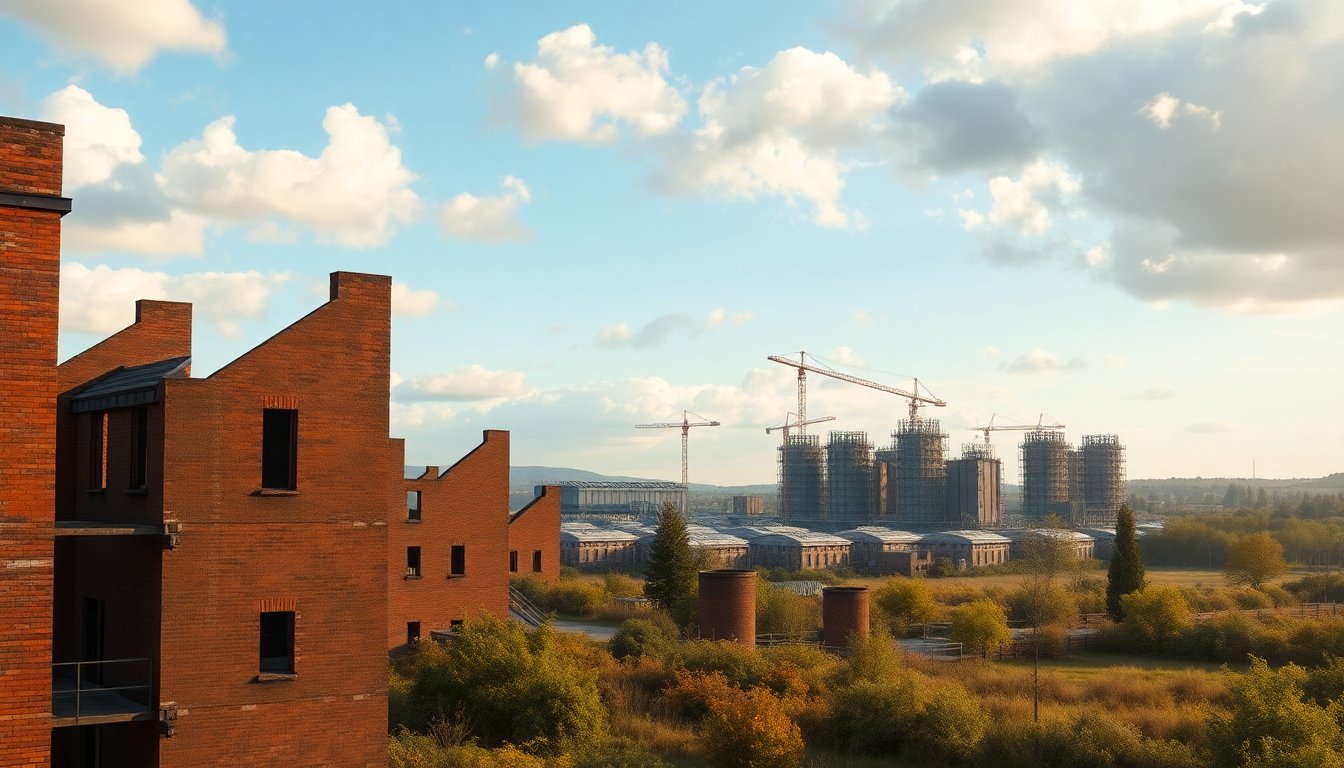Table of Contents
In Newport, Wales, a major transformation is taking shape as Microsoft plans to build expansive data centers on a site with a rich industrial history. Once famous for steel production, Newport is now set to become a center for artificial intelligence computing power.
However, this ambitious project faces significant challenges, particularly due to energy supply issues in Britain.
The initiative includes the construction of five large buildings, covering an area larger than three football pitches. Microsoft points to an unprecedented demand for computing power as the main reason for this investment.
Yet, the success of such a large-scale project depends on the UK’s capacity to deliver adequate energy.
Energy supply: a growing concern
Newport’s strong industrial legacy supports energy-intensive operations, yet concerns arise regarding the UK’s ability to meet growing energy demands.
Matt Clifford, a former AI advisor to the government, warned that without substantial reforms in energy and planning, the future of data centers and their considerable investments could be jeopardized.
Statistics indicate that electricity costs for industrial use in the UK are roughly 60% higher than the average in other countries, according to the International Energy Agency.
Moreover, acquiring a grid connection may take up to ten years, posing a significant obstacle for new projects. Clifford stated, “We had major global AI investors ready to pour billions into our infrastructure, if only we could resolve our energy dilemma.”
The global perspective
The U.S. Ambassador to the UK, Warren Stephens, has emphasized the high cost of energy as a significant obstacle to Britain’s economic growth. He cautioned that without a major reform of the UK’s energy policies, the nation risks undermining its attractiveness as a prime investment destination.
The Newport data center project is anticipated to demand approximately 80MW of energy—sufficient to supply power to an entire small town. Projections suggest that the UK’s total data center capacity must expand five-fold by 2035, intensifying the pressure on energy resources. The National Electricity System Operator (NESO) forecasts that energy demand from data centers will triple during this timeframe.
Grid connection challenges
In response to ongoing challenges, the Department for Science, Innovation and Technology (DSIT) is actively seeking tailored solutions to address the energy needs of data centers. This initiative involves collaboration with regulators, energy providers, and technology companies through the AI Energy Council. Their goal is to ensure that energy is sourced in a responsible and sustainable manner.
AI Minister Kanishka Narayan has voiced confidence in the strengths of the UK’s landscape. He highlights the availability of a skilled workforce and access to capital as pivotal factors for cultivating a robust AI sector. Nevertheless, industry leaders such as Mike Mattacola from CoreWeave warn that high electricity costs may deter potential investors, who might be reluctant to accept these financial burdens.
Infrastructure and planning issues
The director of Hitachi Energy UK has identified the electricity grid as a significant barrier to unlocking Britain’s potential in artificial intelligence. Laura Fleming emphasized the need for data centers to play a central role in energy planning while expressing concerns about the preparedness of the current infrastructure.
According to the National Grid, more than half of all applications for grid connections now come from data centers. Energy regulator Ofgem is working to streamline this process, promoting the exclusion of projects lacking viability to alleviate congestion within the system.
The race for sustainable energy sources
As energy providers aim to capitalize on this growing demand, Drax Power Station, situated 200 miles north of Newport, is positioning itself as a potential solution. The facility plans to utilize its biomass terminals to support new data centers, highlighting its commitment to sustainability in operations.
The demand for energy is increasingly conflicting with the UK’s commitment to achieving net-zero emissions. Data centers continue to favor gas as their primary energy source, raising significant concerns about carbon emissions not accounted for in the UK’s Carbon Budget Delivery Plan.
Government strategies and future directions
A tension exists within the UK government regarding energy policy. The AI Energy Council, co-chaired by ministers with differing priorities, must navigate the challenge of balancing economic growth with environmental responsibilities. Energy Secretary Ed Miliband is focused on reducing emissions, while Technology Secretary Liz Kendall aims to convert AI’s potential into concrete results.
Government plans AI growth zones to boost energy sustainability
The government has proposed the establishment of AI growth zones, which will consist of large data center campuses situated on former industrial sites with existing grid connections. While one zone has been confirmed in Northumberland, additional plans, including one for Teesside, face delays due to competing energy projects.
Looking ahead, the government is focusing on cleaner energy solutions such as nuclear energy, particularly through the use of small modular reactors, to sustainably meet energy demands. The effectiveness of these initiatives hinges on rapid decision-making and strategic planning.
As the UK confronts the challenges of energy requirements and environmental responsibilities, the journey forward will necessitate innovative solutions and collaboration among all stakeholders involved.





